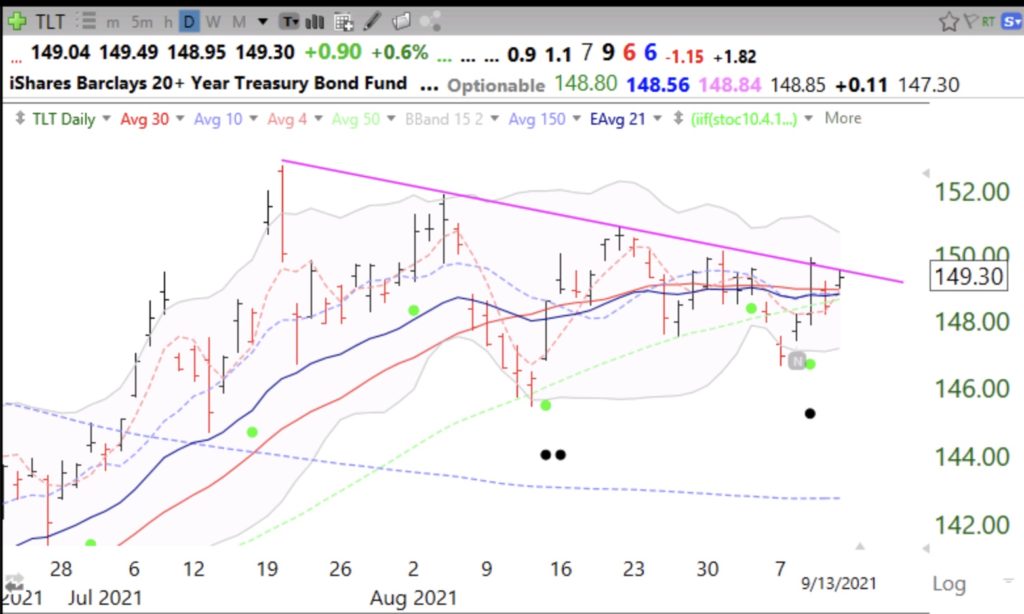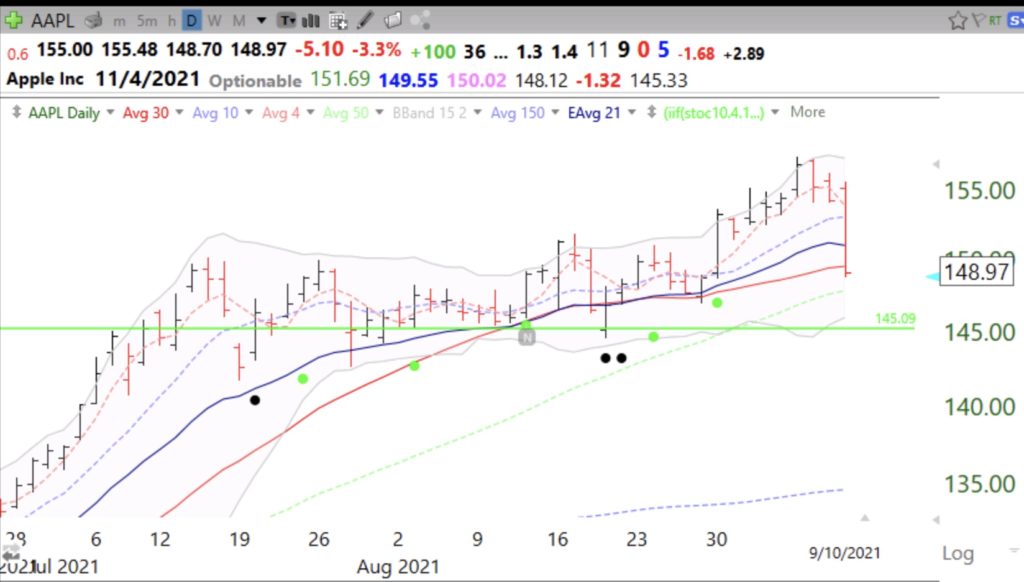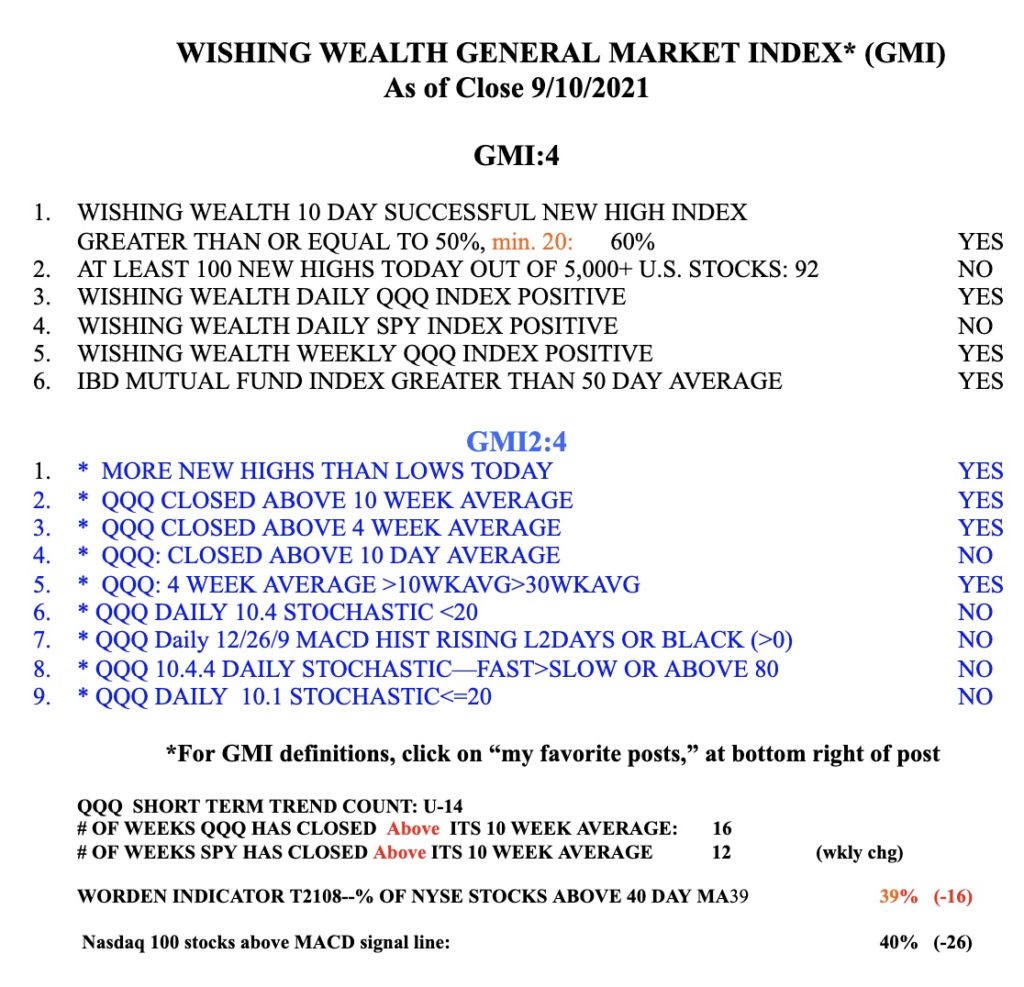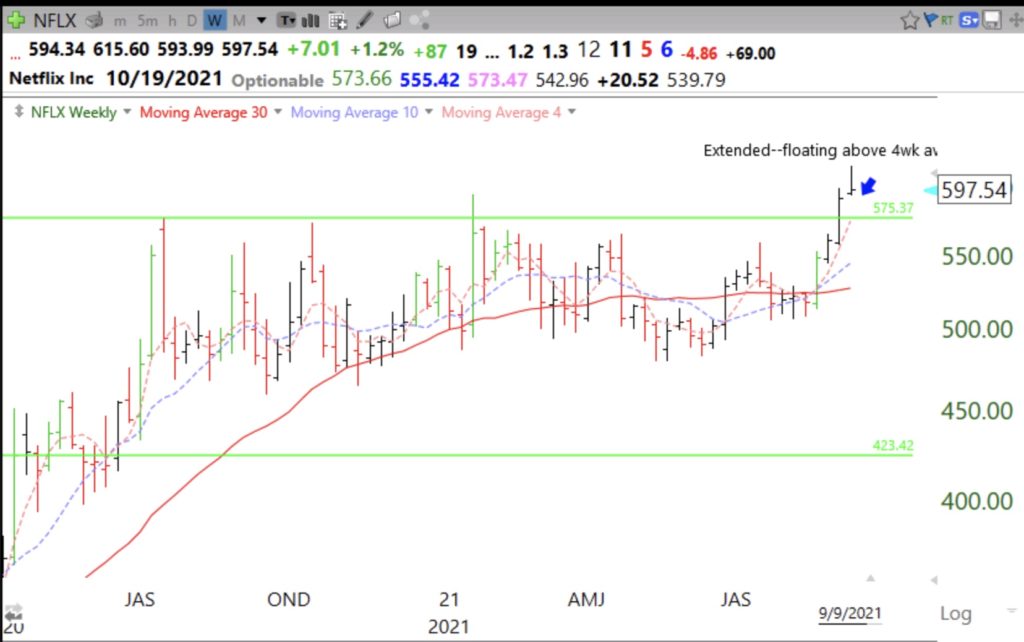Which way TLT breaks will tell us trend of longer term interest rates.
Blog post: Day 14 of $QQQ short term up-trend but GMI=4, huge event risk, end of quarter window dressing–cash is king; Will $AAPL hold green line?
I am very cautious with the GMI falling to 4 (of 6) and with the current huge event risk: September/October seasonal weakness, a likely fight over raising the debt limit and possible Fed tapering. One positive element for me is possible mutual fund window dressing the last week of September (end of 3rd quarter) when strong stocks get bought up by funds trying to spruce up their quarterly reports. We shall see. I think the best position now may be cash. AAPL had a rough day Friday and needs to hold its green line. A failed GLB would be a bad sign for the general market indexes.



